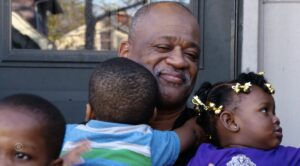
Fairness is hearing all sides to a story, even when it’s hard to see there is another side. Being open-minded to different perspectives allows someone to understand a situation in a new and more complete way.

Identify and understand emotions, values, attitudes, motivations, mindsets, and personal attributes.
Interpersonal and social skills to guide appropriate behavior and create positive relationships and meaningful connections .
Employ critical and creative thinking skills to solve problems and make rational, ethical, and effective decisions that produce the best possible result.
This lesson is designed for students to explore perspectives in stories where there is an apparent good and bad side. Students will be encouraged to think about how a familiar story looks different when they consider a different perspective.
Large Group
Small Group